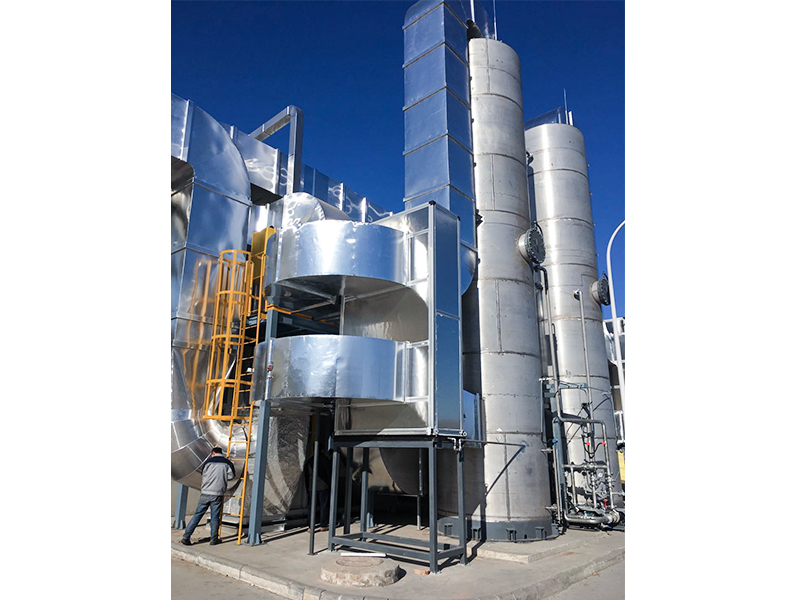The NMP solvent recovery system comprises several key components, each serving a specific role in the recovery process. These components work together to efficiently remove NMP solvent from process streams, recycle it for reuse, and ensure compliance with environmental regulations. Here's a detailed explanation of the components and their roles:
Feed Tank or Holding Vessel:
The feed tank or holding vessel is where the contaminated NMP solvent is initially collected from various process streams. This component serves as a temporary storage container for the solvent before it undergoes the recovery process.
Distillation Column:
The distillation column is the central component of the solvent recovery system where the separation of NMP solvent from contaminants occurs. The column utilizes the principle of fractional distillation, where the mixture is heated to vaporize the solvent, and then the vapor is condensed back into liquid form, separating it from other components based on differences in boiling points.
Reboiler:
The reboiler is a heat exchanger located at the base of the distillation column. Its primary function is to provide heat to the bottom of the column, vaporizing the liquid feed and facilitating the separation of the NMP solvent from contaminants.
Condenser:
The condenser is another heat exchanger located at the top of the distillation column. Its role is to cool and condense the NMP vapor back into liquid form after it has been separated from contaminants. The condensed NMP solvent is collected and stored for reuse.
Recovery Solvent Separator:
The recovery solvent separator is a component that helps separate any remaining traces of contaminants from the recovered NMP solvent. It ensures that the recycled solvent meets purity specifications before being reintroduced into the process.
Heat Exchangers:
Heat exchangers are used throughout the solvent recovery system to transfer heat efficiently between different process streams. They help optimize energy usage by recovering heat from outgoing process streams and transferring it to incoming streams, reducing overall energy consumption.

Pumps and Valves:
Pumps and valves are essential components used to control the flow of solvent and other process fluids within the recovery system. They ensure proper circulation of the solvent through different stages of the recovery process and allow for adjustments in flow rates as needed.
Instrumentation and Control System:
Instrumentation and control systems monitor and regulate various parameters such as temperature, pressure, flow rates, and solvent concentrations throughout the recovery process. They provide real-time data and enable operators to adjust operating parameters to optimize system performance and ensure safety.
Safety Systems:
Safety systems are incorporated into the solvent recovery system to prevent and mitigate potential hazards, such as overpressure, overheating, or equipment malfunctions. These systems include pressure relief valves, temperature sensors, emergency shutdown mechanisms, and alarms to ensure safe operation.
Environmental Controls:
Environmental controls are implemented to ensure compliance with regulatory standards for emissions and waste disposal. This may include scrubbers or filters to remove any remaining contaminants from exhaust gases before they are released into the atmosphere.
Monitoring and Reporting Systems:
Monitoring and reporting systems provide operators with real-time data on system performance, including solvent recovery rates, purity levels, energy consumption, and compliance with environmental regulations. This information is used to optimize system operation and track performance over time.



 English
English 简体中文
简体中文